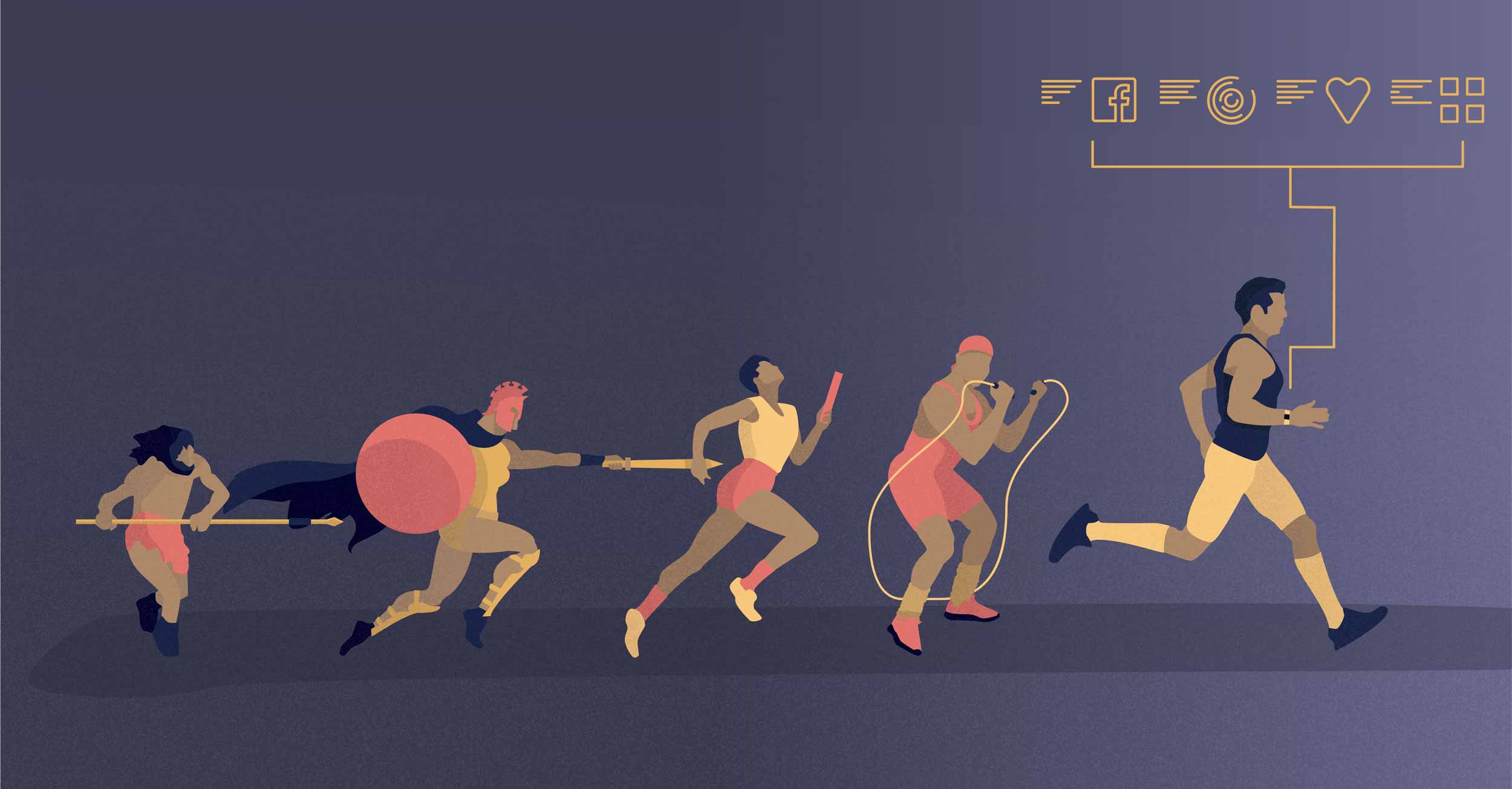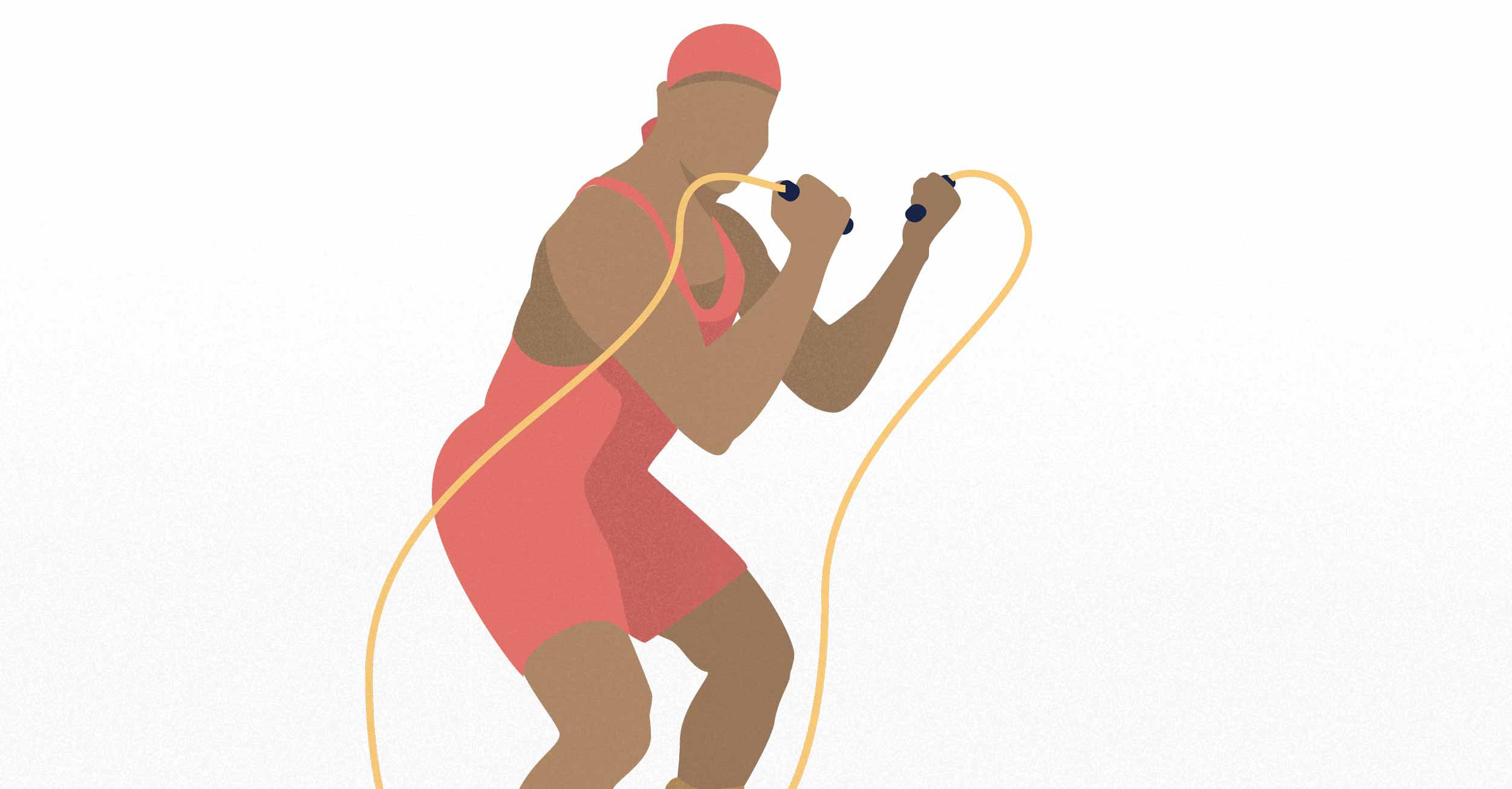
Fittech: Inevitable Mind-Domination
Fitness isn’t a modern day invention, nor is the technology or the equipment. For generations people have been using tools in fitness to stay fit and motivated. To anticipate where the future of fitness technology is heading–lets understand its history.
Hunter-gatherer

Physical development was initially ingrained within the natural mechanism of human survival throughout history. The demand for growing food and rearing animals required physical and mental strength with complex movements, which improved the core strength and stability. In fact, it dates back to Ancient times, the Greeks and Romans implemented physical exercises to prepare their soldiers for war. They later used this training within sports activities and recognised the positive impact on people’s mental and physical wellbeing, which they later promoted through their education system.
The rapid transition from an Agricultural (harvesting) into an Industrial (manufacturing) era created significant progress and opportunities within the economy and social class system. As the life expectancy of the population extended–the standards of living also increased. People had the financial capability to buy goods from the market and butcher shops, which eliminated the need to hunt for food. Fitness became a recreational activity within society, however, the social class divisions and gender stereotypes determined who could participate in specific activities. With the rise of people attending performances such as bodybuilding, gymnastics and athletics, a new focus on building muscles and devoting time to strengthening the body became more desirable. As a result, the positive promotion of health became a western phenomenon, which carried into the 21st century.
Consumer demand

From hunter-gatherers to the 4th Industrial Revolution (last three decades) human survival evolved, and the modern man continued to embrace fitness into their lifestyle, as a means to improve their health, wellbeing and appearance. More gyms started popping up and integrating into local communities due to a new consumer demand, ranging from schools, residential properties and office spaces, which created convenience and motivation.
As the years progressed, entertainment and connectivity on smartphones became a daily necessity for gym users. Consumers quickly became dissatisfied and unmotivated, if the facility did not integrate digital capabilities within their fitness experience. Another influencing factor for a lack of attendance were uncomfortable gym dynamics such as people hoarding equipment often resulted in intimidating verbal and physical interactions amongst gym users. Factoring in some these components, this led to a decline of members attending the fitness sessions, which contributed to an annual waste of £37 million on unused gym memberships in the UK alone (according to Which?).
Disruptive companies creating solutions through Fittech

The gap in the market motivated industry experts to study the decline and find innovative solutions to address these challenges through technology. They needed to introduce a more personalised and affordable way of keeping fit to attract the masses, whilst being relevant. What they discovered was that gym users enjoyed the performance data being captured during their workout, however, they couldn’t take this data with them. Therefore, fitness trackers and apps were developed to address this problem, using sensors and connectivity on smart devices. There was a high demand for these gadgets because consumers now gained access to their physical activity data on-the-go. This helped users remain motivated, as there was an ongoing record of their progress, which could be used as a benchmark for optimisation in their fitness regime.
Further disruption within the industry surfaced because fitness wearable devices became a trendy solution amongst partnerships between major fashion, sports brands and technology companies. Due to the consistent use of these smart devices, live-streaming fitness classes became a requirement for gym fanatics, as online fitness trainers were able to help develop and manage consumers’ health habits, physical strength, abilities and confidence. In the age of health-conscious consumers and social media networking, modern fitness has become competitive and boastful. More people are sharing fitness-based photos and videos to demonstrate their achievements and compete in the virtual world, to feed their ego and add credibility through their performance tracking. These digital devices prompted users to push their boundaries and remain competitive with themselves and amongst other people.
“Worldwide wearables sales will grow by an average of 20 percent each year over the next five years, becoming a $29 billion market with 243 million unit sales by 2022”
– Forbes
How companies are using Fittech and data to improve their services?
Another shift in fitness and wellbeing occurred in the last few years, as different generations and cultures continued to blend within fast-paced workplaces. A greater emphasis on striking a work-life-balance increased due to the mental health awareness movement, which revealed physical exercise reduces stress and improves their quality of life. Companies discovered that creativity and productivity increased by 76% when they were physically active (according to Marketing Magazine), so they started to adopt fitness into their work culture. With big-data continuing to advance and integrate into society, companies are trying to find ways to utilise personal data through these smart devices. If done successfully, they would effectively market to their existing customers and expand into new customer segment, which would help them increase their sales and market dominance. However, with GDPR (General Data Protection Regulation) being mandatory for all businesses, they must develop creative incentives to gain consumer consent to use their sensitive data, and ensure its security.
The future of Fittech
With the bombardment of notifications and alerts from fitness tech-based devices, society will once again crave the simplicity, practicality, and naturalness from their fitness routines. The next phase of fitness entrepreneurs must make strides in creating a seamless integration in consideration of future customer requirements, to compete in this saturated market. Fitness technology is already moving beyond smartphones and wearable devices, as it is being embraced within other realms such as AI (artificial intelligence), the IoT (Internet of Things) and AR (Augmented Reality). In order to enhance virtual group classes and machine learning to personalise customer fitness experiences.
We should expect future fitness technology trends to include DNA testing integration within wearable devices. These gadgets will provide more accurate and tailored genetic insights, to help users create focused goals to receive better health outcomes. Neuroscience wearables will tap into brain stimulation to improve functions such as athletic performance, chronic pain and speed up cognitive thinking (learning new skills). This form of data processing will require the use of invasive methods of neurostimulation to strengthen the human mind. If this is the future of fitness technology, would it be the first stepping stone of mind invasion or empowerment?
Regardless of what the next phase will be, to retain customer engagement and loyalty, Fittech brands must continue studying consumer behaviours to develop disruptive solutions that meet their requirements, if they want to remain relevant.
Get involved.
So, we hope you enjoyed our weekly round-up of cool design! Think you’ve seen something that would make this list? Send it in to hello@outfly.io, and stay tuned to see if it’s chosen next week.









